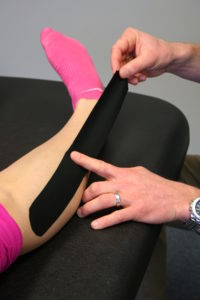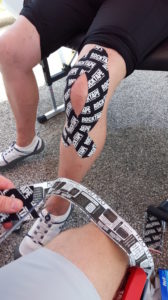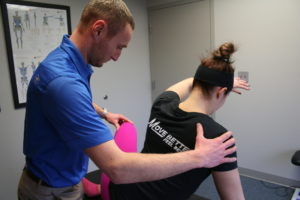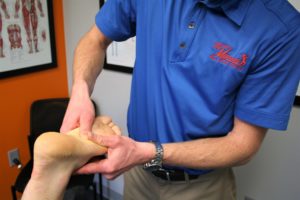This blog we are going to talk about common running injuries that we see in our office on a regular basis. We are going to cover what the injury is, preventative tips, and treatment. These are merely tips that are meant to help you and educate you. As always, if you think there maybe something more going on, schedule an appointment face to face with someone that would be able to assess your injury.
As the weather decided to get warmer we all want to get out and enjoy it. As a runner, you need to take care of yourself so that you are able to run throughout the summer and be able to enjoy it injury-free. We typically see hip, knee, and foot complaints in runners since that is the part of the body that is hitting the pavement in a repetitive pattern. In general, active warm-ups are a great way to prime your body for running; stretching is much more productive after a run to cool down. Many people think that running is only a lower body sport, but it is a whole body sport. Yes, your legs are the ones hitting the pavement but your arms and shoulders should be moving with the opposite leg.
Shin Splints
- Injury
- This is a repetitive injury that is an irritation or possible microtears to the tibialis anterior or tibialis posterior (these are often referred to as inside or outside shin splints).
- The longer this injury occurs, typically the more damage is being caused.
- Treatment
- If this is only minor, treatment is ice, reduce the amount of running and/or rest. If this injury has been going on for a while or is very painful; there is a chance of stress fracture which will result in complete rest until healing occurs.
- In our office we adjust the lower extremity along with active rehabilitation exercises and possible acupuncture/dry needling. RockTape can also help speed up the recovery process and make the shins less painful.
- Preventative tips
- Proper running shoes for your foot and replacing them around every 300-500 miles
- Gradual increases in distances gives your body time to adjust to the different demands.
- Cross training is very important. It gives your body a break from the repetitive motion of running but keeps you moving.

Runner’s Knee
- Injury
- Often times in “runner’s knee” the pain is located around the patella (knee cap). If this is the case, this can be irritation of the cartilage under the patella.
- Treatment
- In our office we look at the function and movement of the knee, ankle, and hip. The knee is often painful due to something else above or below it causing an issue.
- We look to figure out the problem and correctly diagnose you to get the correct specific treatment for your injury.
- With this injury, we will focus on why you are having pain in your knee. We will assess your walking/running and come up with a specific plan for you to decrease pain and increase your function.
- Preventative tips
- Cross training is important to give your body a break of the same repetitive motion of running.
- Listen to your body and what it is telling you is important.
- At the beginning, taking a few days off between runs, or decrease the length and amount of running for a while and then slowly add back in the mileage can help.
- Sometimes running on softer, more forgiving, surfaces for a length of time can help

IT Band Syndrome
- Injury
- Inflammation or tightening of the thick band of connective tissue that runs on the outside of the thigh.
- Treatment
- Sometimes a few days rest along with stretching/foam rolling can reduce the issue
- In our office we give specific rehabilitation exercises for IT band syndrome. Many times the IT band is over compensating, we often strengthen muscles around the hip to let the IT band not overcompensate.
- We also can also help break up scar tissue, dry needle/acupuncture, and Rocktape.
- Preventative tips
- Proper warm up activities and cool down stretches
- Slow increases in mileage
- Activating glutes and breathing properly
 Plantar fasciitis
Plantar fasciitis
- Injury
- The injury associated with plantar fasciitis is inflammation of the bottom of the foot between the ball of your foot and heel.
- Often there is quite a bit of pain in the mornings when you first wake up and get out of bed. Also, being barefoot is often very painful.
- Treatment
- In our office we use soft tissue mobilization to help the fascia (connective tissue) loosen and relax. Then we do simple take home exercises to help keep the tissue looser and activate other muscles so you can have lasting results.
- Each exercises given is tailored to each individual patient.
- Preventative tips
- Proper warm up and cool down exercises.
- Cross training

Writing this article, I hope everyone reading this picked up on a few key points:
- Cross training is very important in any sport you do
- Listening to your body
Pain is NOT “normal”; many people often deal with pain because they think it is a part of the training schedule. There is a difference between soreness and pain. Pain is not acceptable.
